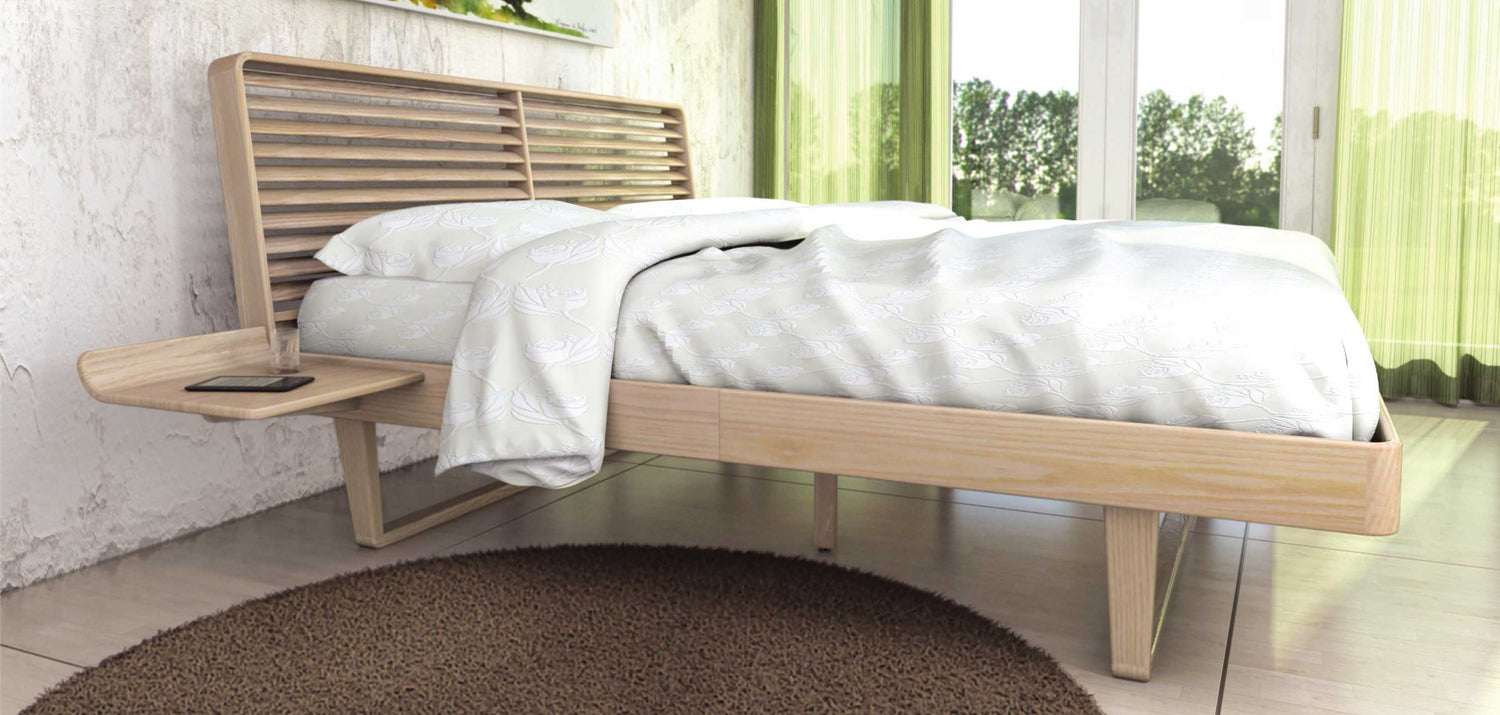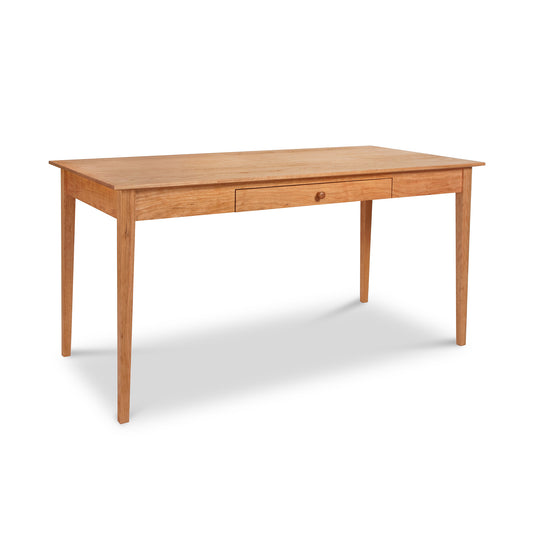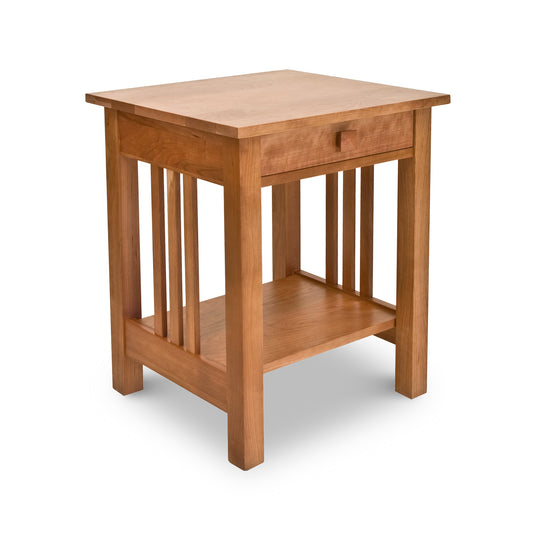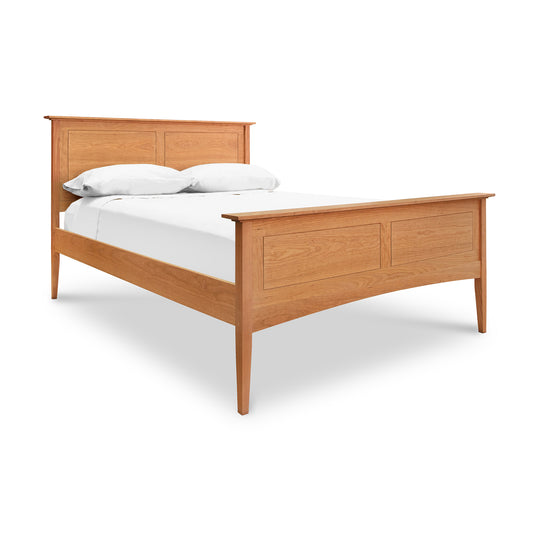Ash Wood
-
Ash is a light colored, smooth-grained hardwood that grows throughout the east coast and parts of Canada. With its typical straight grain and beige-to-light-brown hue, ash wood is a very attractive option for fine furniture. Its one of the most durable varieties and has an extensive history in American furniture making. It is durable, lightweight, aesthetically pleasing, and absorbs wood stains well. Its characteristics as a lightweight and shock-resistant wood have made it a favorite for baseball bats, tool handles, and restaurant furniture. Today ash is making a splash in home furnishings, particularly in the mid-century modern style.
Fraxinus, the scientific name for ash, is a member of the olive tree family. There are dozens of varieties of ash trees native throughout North America. White ash and green ash are the most prevalent. Both grow abundantly in Vermont, as does black ash.
-
Characteristics of Ash Wood
- Color: Beige or light brown
- Source: White Ash Tree (Fraxinus americana L.)
- Durability: 1320 on the Janka scale
- Cost: $2.50 to $7.00 per board foot
- Common Uses: Furniture, floors, cabinets, sports equipment, tool handles
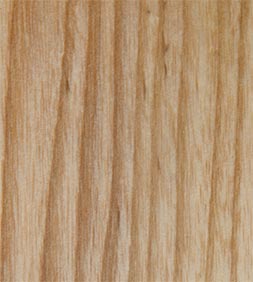
What Color is Ash Wood?
Unlike other trees which have large color variations between the innermost part of the tree (heartwood) and the outermost part of the tree (sapwood), it can sometimes be difficult to see where the line between the two is with ash. Overall, its quite light and tends to be various shades of beige which will darken slightly over time.
Why Does Ash Wood Change Colors Over Time?
All hardwoods tend to change hues a bit as the years go by. Generally speaking, lighter varieties will become richer, while darker woods will lighten some. This is a natural process caused by exposure to UV light and oxygen.
What are the Common Uses of Ash Wood?
Going back to ancient times, ash wood has been a major part of peoples lives. Early cultures used it for everythingfrom weapons to wagonsand even believed it had spiritual properties or the ability to heal and bring prosperity. These days, ash remains common in furniture, cabinets, flooring, tools, weapons, sports equipment, and more.
What Does the Grain Pattern of Ash Wood Look Like?
Ash wood almost always has a straight grain, though the conditions the tree grows in will occasionally create unique patterns. For example, if its strained or succumbs to a pest, that can impact the appearance of the grain. This is referred to as figured wood. For this reason, youll sometimes see curly or birdseye grain, among others. Spalted ash, in particular, is quite popular with artisan furniture designers, though figured woods are a bit harder to find than the straight-grained variety.
Is Ash a Hardwood or Softwood?
While most people think hardwood is a reference to the durability or density of wood, it actually only refers to the type of tree the wood came from. If its a hardwood, that means it came from a dicot tree-- typically a broad-leafed variety of tree. If its a softwood, it came from a gymnosperm tree-- typically a conifer. Ash is a hardwood, along with cherry, oak, walnut, and maple. In contrast, some of the common softwoods found in woodworking include pine, fir, and cedar.
How Dense/Hard is Ash Wood?
In order to determine the durability of a wood, the Janka Test is used. Basically, a steel ball is pressed into a block of wood until it becomes embedded half way. The amount of force required to do this is then measured. In the United States, we typically display this number as lbf (pounds of force) or Janka, though youll see different measurements used in other parts of the world.
White ash wood, the one most commonly used in furniture, measures 1320 on the Janka scale. This puts it right below maple and white oak, which sit at 1,450 Janka and 1,360 Janka, respectively. However, it tops red oak, walnut, and cherry, making it is one of the most durable options available for fine furniture.
-
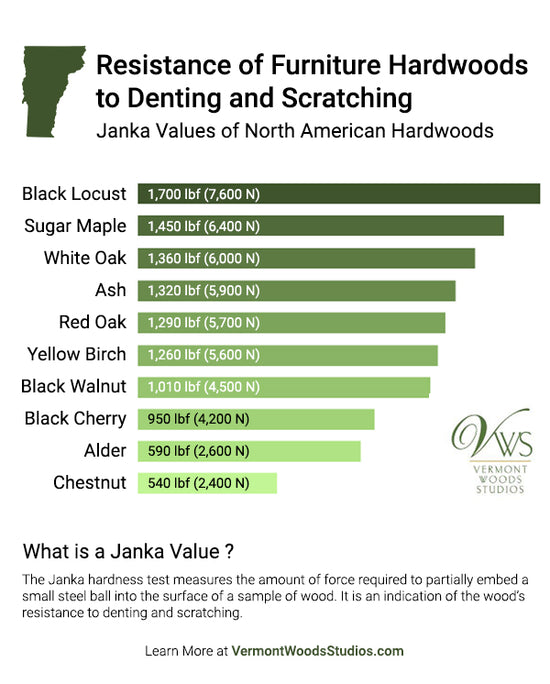
-
How Dense/Hard is Ash Wood?
In order to determine the durability of a wood, the Janka Test is used. Basically, a steel ball is pressed into a block of wood until it becomes embedded half way. The amount of force required to do this is then measured. In the United States, we typically display this number as lbf (pounds of force) or Janka, though youll see different measurements used in other parts of the world.
White ash wood, the one most commonly used in furniture, measures 1320 on the Janka scale. This puts it right below maple and white oak, which sit at 1,450 Janka and 1,360 Janka, respectively. However, it tops red oak, walnut, and cherry, making it is one of the most durable options available for fine furniture.
Hard maple (from a sugar maple tree) rates 1,450 Janka. It tops most other hardwood types that are popular with furniture makers. For example, white oak is the next in line at 1,360 Janka. This is followed by red oak at 1,290 Janka, walnut at 1,010 Janka, and cherry at 995 Janka.
With that in mind, red maple, which technically is a soft maple wood, is not far behind, coming in at 950 Janka. Box elder, along with bigleaf, silver, and striped maple, all fall from about 700 Janka to just over 800 Janka. Again, that means it takes 700 or more pounds of force to embed something the size of a BB in the wood, so its still quite durable.
How Can I Tell if the Furniture I Have is Ash Wood?
Its really difficult to tell if a piece of furniture is made from ash wood because it closely resembles oak when stained. In fact, many antique pieces get passed off as being oak when theyre really ash wood. Even professionals mistake the two from time to time when relying on visual indicators only. For this reason, its important to purchase ash furniture from an experienced and reputable seller; thats the only way to know for certain unless youve got a microscope and scientific knowledge.
Can Ash Wood Furniture Go Outside?
Realistically, no real wood furniture should go outside, simply because it would require maintenance at least once a year and, even then, it would still degrade. Ash wood also tends to be one of the least rot-resistant species, so its not something youd want to keep outside. That said, Vermont Woods Studios makes gorgeous outdoor furniture guaranteed to last a lifetime. Its crafted with recycled plastic lumber (RPL), a dense plastic that looks like real wood but withstands the elements and requires minimal care.
Is Ash Wood Eco-Friendly? Are White Ash Trees Endangered?
Ash trees have more than thrived for centuries throughout North America. In fact, many resources consider them to be invasive because they can take hold almost anywhere. Unfortunately, the Emerald Ash Borer, a wood-boring pest, slipped into the country a few years ago. It is decimating our ash tree populations. A healthy ash tree that becomes infested may only live a matter of years. The government has stepped in and quarantined ash trees, meaning they cant be transported out of certain parts of the country in an effort to prevent the spread of the Emerald Ash Borer. Sadly, the Emerald Ash Borer has been detected here in Vermont as of mid-2018. Ash trees are now considered critically endangered, meaning theyre at high risk of becoming extinct in the wild. That said, many agencies have come together to eradicate the pest, and trees can go on to live long healthy lives if theyre treated.
The ash wood we use is always sustainably-harvested, meaning our woodworkers take special care not to harvest wood in a way that harms the environment. They also choose local wood as much as possible, so the carbon footprint is reduced because theres minimal transportation. That said, as more ash trees succumb to the Emerald Ash Borer, it will become more difficult to find furniture made with ash wood..
How to Care for Ash Wood Furniture
Ash wood can be finished in numerous ways, including varnish, wax, lacquer and oil. Each finish will require different care. That said, youll want to keep your ash furniture in a dry area and dust it regularly. Its best to avoid commercial cleaners and polishes, which may damage the finish or make it sticky.
Learn more about the different wood finishes we offer and how to care for each one.
What to Look for When Purchasing Ash Furniture
Now more than ever, its important to select local products. The Emerald Ash Borer isnt native to the United States. It was a hitchhiker brought in with international wood imports from Asia and/or Russia. Those who are concerned about the environment will want to take every precaution to ensure that their piece was sustainably-harvested, and wont contribute to the loss of ash trees in their natural habits. In addition to this, youll want to make sure that any ash furniture you purchase is built well. Although ash wood is incredibly durable, quality craftsmanship will ensure your furniture lasts a lifetime.
Our craftsmen are true experts who honor natural ecology, and as such, our furniture is eco-friendly and comes with a lifetime quality guarantee.
Read More on the Blog
-
Hardwood Furniture Buyer's Guide, Part 1
Read MoreThis hardwood dining table, buffet and chair set is made of American black cherry wood. Mortise and tenon joints are used as well as dovetails in the drawers of the buffet.
-
5 Wood Sourcing Certifications
Read MoreSustainable wood sourcing is essential to protecting forests and conserving resources for future generations. By understanding what each designation stands for, you can make informed decisions when purchasing.
-
FSC Certified Wood: Everything You Need to Know
Read MoreSupporters of the sustainable American-made furniture movement prefer the use of domestic wood over the use of imported FSC certified wood.
-
Wood Furniture Buyer's Guide
Read MoreShopping online for high quality wood furniture requires some research. After all, fine furniture is a big investment.
-
5 Exotic Hardwoods to Avoid & Why
Read MoreWood is generally an earth friendly material because it is renewable, meaning it grows back and isn’t finite like oil, metals, or even rock. But not all species of wood are inherently sustainable.
Other Types of Wood Species
-
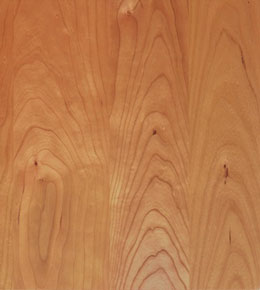
Cherry Wood
More About Cherry -
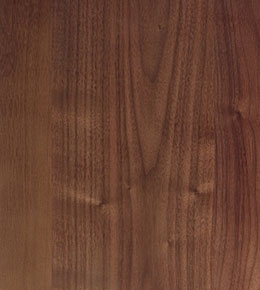
Walnut Wood
More About Walnut -
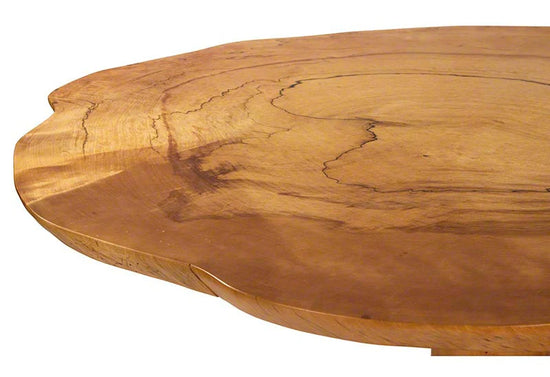
Birch Wood
More About Birch -
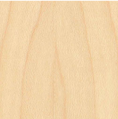
Maple Wood
More About Maple

